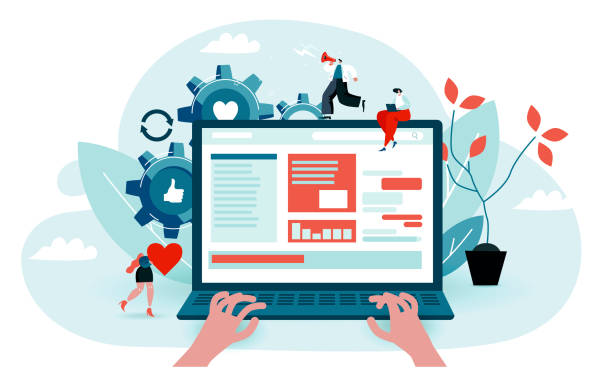Introduction to E-commerce Website Design and Its Importance
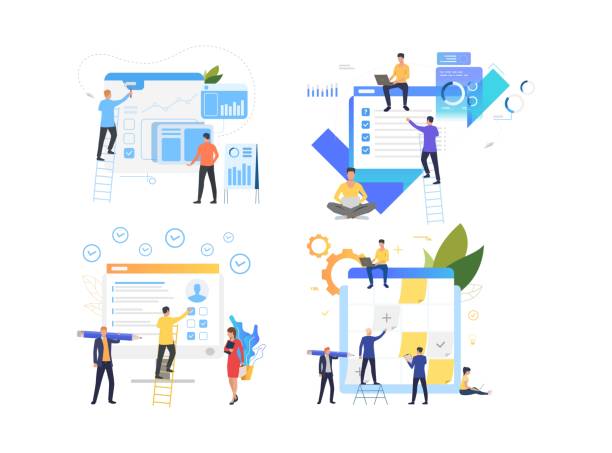
In today’s world, where the digitalization of people’s lives is rapidly increasing, #e-commerce_website_design# is no longer a luxury option but a business necessity.
A professional e-commerce website not only provides a platform for offering your products and services but also enhances your brand’s credibility.
This #e-commerce# platform allows you to connect with your customers and sell at any hour of the day or night, from anywhere in the world.
This section of the article provides an explanatory and guiding overview of this topic’s importance.
By having an online store, businesses can reach new markets that might not be accessible in a physical space.
This broader access, along with lower operational costs compared to physical stores, promises a higher return on investment (ROI).
E-commerce, transcending geographical boundaries, directs potential customers to your business.
One of the most important advantages of e-commerce website design is the ability to personalize the shopping experience for customers; a feature less commonly seen in traditional stores.
These capabilities not only help increase customer satisfaction but also ensure their loyalty.
Finally, having an online store platform allows businesses to collect valuable data about customer behavior, which is crucial for improving marketing and sales strategies.
Therefore, investing in e-commerce website design is a fundamental step for success in the digital age.
How much does losing business leads due to an unprofessional website cost you? Solve this problem forever with professional corporate website design by Rasaweb!
✅ Increase credibility and trust of potential customers
✅ Easier attraction of new business leads
⚡ Get a free consultation now!
Key Features of an Efficient E-commerce Website
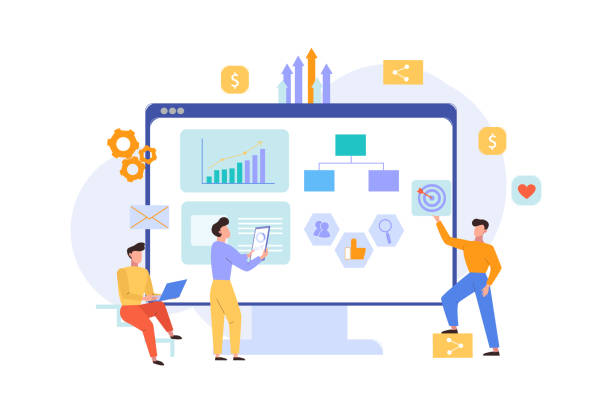
For an #e-commerce_website# to be truly effective and successful, it must incorporate specific features that enhance user experience and facilitate the purchasing process.
This section provides a specialized and guiding introduction to these features.
The first and perhaps most important feature is an attractive User Interface (UI) and user-friendly User Experience (UX) that provides easy and enjoyable navigation for the customer.
High loading speed is another vital factor; no user likes to wait for pages to load.
Customization capability for products and advanced search filters help customers quickly find the product they are looking for.
Also, providing detailed and comprehensive descriptions for each product, along with high-quality images and instructional videos, builds customer trust.
E-commerce website design should include a robust content management system for easy updating of products and prices.
The ability for customers to review products, a Q&A section, and online support via live chat or WhatsApp, all contribute to better customer interaction and increased sales.
A functional shopping cart and a secure, simple payment process are the final and critical steps to a successful purchase.
Furthermore, responsive design for correct display of the website on various devices such as mobile phones and tablets is highly important, as many users today shop via their mobile phones.
Search Engine Optimization (SEO) is also essential for the site’s visibility in search results.
Ultimately, successful e-commerce website design is a combination of these key elements working together to provide an unparalleled shopping experience.
Choosing the Right Platform for Your E-commerce Website Design
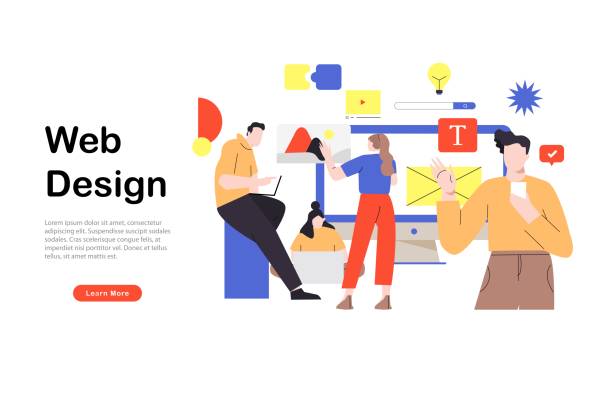
One of the key decisions in the #creating_an_online_store# process is choosing the right platform.
This choice not only affects the cost and time of e-commerce website design but also impacts its future development capabilities and scalability.
This section provides an analytical and explanatory review of the available options.
Various platforms are available, each with its own advantages and disadvantages.
WordPress with the WooCommerce plugin is one of the most popular options for small and medium-sized businesses, due to its high flexibility, relatively low costs, and large user community.
For larger businesses with specific needs, platforms like Magento or Shopify are suitable options.
Shopify is a comprehensive, hosted solution that offers quick and easy setup but may have limitations in deep customizations.
Magento is also very powerful and flexible but requires more technical expertise for management and development.
Deciding which platform is best for building an online store depends on your budget, technical knowledge level, and the scalability required for your business.
Some businesses also prefer to use proprietary platforms developed custom for their specific needs, but this approach is usually more expensive and time-consuming.
Below is a table comparing some of these platforms:
| Platform | Advantages | Disadvantages | Suitable for |
|---|---|---|---|
| WordPress/WooCommerce | High flexibility, numerous plugins, large user community, full control | Requires hosting and security management, complexity for beginners | Small and medium businesses, blogs, content-heavy websites |
| Shopify | Easy setup, strong support, built-in security and hosting | Limitations in deep customization, monthly fees | Businesses of any size looking for simplicity |
| Magento | Powerful, scalable, suitable for large businesses, high customization | High complexity, requires significant technical expertise, high cost | Large and complex businesses with specific needs |
This table provides an overview of the platforms, but the final choice should be made considering the specific needs of each business and in consultation with e-commerce website design specialists.
The Importance of User Experience (UX) and User Interface (UI) in E-commerce Website Design

One of the most important factors for success in an #online_store# is attention to User Experience (UX) and User Interface (UI).
These two concepts, although related, play distinct roles in e-commerce website design.
This section provides an educational and specialized look at the importance of these two concepts.
UI refers to the appearance and visual elements of the site: color scheme, fonts, button layout, and images.
UX, however, relates to the user’s feeling when interacting with the site: Is the site easy to navigate? Is the purchasing process straightforward and unambiguous? Does the user feel satisfied? A beautiful UI without good UX is like a book with a beautiful cover but chaotic content.
Conversely, a strong UX with poor UI might be functional but lacks the attractiveness to engage and retain users.
In e-commerce website design, both must work synergistically.
Simple and logical navigation, a purchasing process with minimal clicks, high-quality and attractive product images, clear and complete information, and robust search capabilities are all key elements for creating an excellent UX and UI.
User interface should not only be beautiful but also designed so that the user can easily find what they are looking for.
An e-commerce site with eye-catching visual design and intuitive navigation encourages users to spend more time on the site and increases their likelihood of making a purchase.
Therefore, investing in e-commerce website design specialists who pay special attention to UX/UI is a smart decision for any online business.
Is your e-commerce site ready to attract maximum customers and increase sales? Rasaweb revolutionizes your online business with modern and efficient e-commerce website designs.
✅ Increased speed and SEO improvement
✅ Excellent user experience on mobile and desktop⚡ Get a free e-commerce website design consultation from Rasaweb!
Payment Gateways and Transaction Security
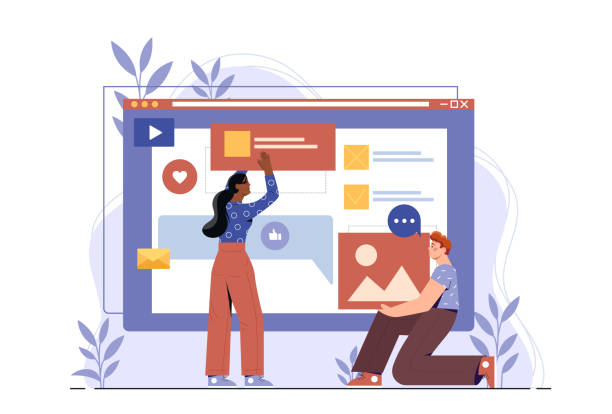
The security of payment gateways and the protection of customer information are among the most critical aspects in #launching_an_online_store# and, generally, e-commerce website design.
This section addresses these issues in a specialized and guiding manner.
Customer trust in your payment system directly impacts your conversion rate and loyalty.
The first step is to choose secure and reputable payment gateways that comply with high security standards such as PCI DSS (Payment Card Industry Data Security Standard).
In Iran, bank payment gateways like Saman Kish, ZarinPal, and EDP are popular options, each with its own characteristics.
In addition to selecting the appropriate gateway, implementing an SSL/TLS certificate is essential for encrypting data sent and received between the user and the server.
This certificate, by displaying a green lock icon in the browser’s address bar, assures the user that their information is being transmitted securely.
Payment gateways must also provide convenience and speed for the user, in addition to security.
Supporting diverse payment methods such as credit cards, e-wallets, and cash on delivery (COD) improves the user experience.
Also, fraud detection systems and two-factor authentication can add additional layers of security.
A responsible e-commerce website must constantly update its security systems and identify and fix any potential vulnerabilities through regular monitoring and review.
Training employees on security protocols and data privacy is also of paramount importance.
Finally, transparency in privacy policies and data usage increases customer trust in your e-commerce website design.
Optimizing E-commerce Websites for Search Engines (SEO)
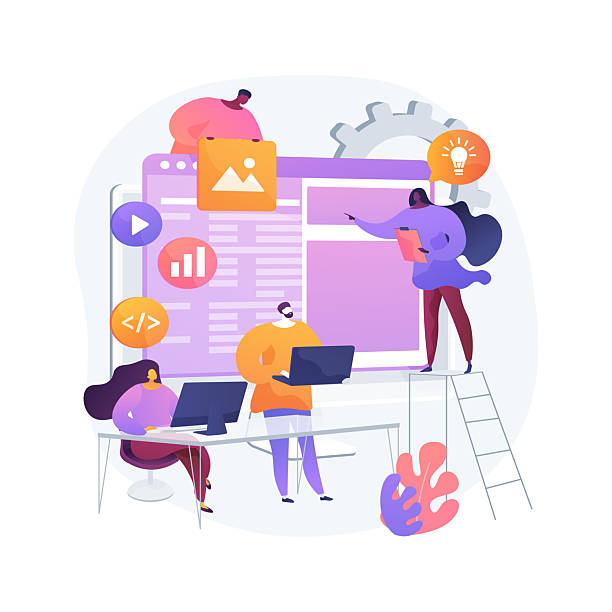
Having a well-designed #online_store# is only half the battle; for real success, you need to ensure that potential customers can find you.
This is where Search Engine Optimization (SEO) comes into play.
This section provides an educational and specialized guide on how to improve your site’s ranking in search results.
The goal of SEO is to have your site appear at the top of Google and other search engines when people search for keywords related to your products.
For a successful e-commerce website design, SEO must be considered from the outset.
This includes keyword research to find phrases your customers use to search for your products.
Then, these keywords should be strategically embedded in product titles, descriptions, page URLs, and your blog content.
Image optimization (using Alt tags and compression for speed), creating high-quality and unique content (product descriptions and blog articles), and proper internal linking structure are all important on-page SEO measures.
SEO also includes technical site optimization such as loading speed, mobile responsiveness, and using structured data (Schema Markup) to help search engines understand your site’s content.
Finally, building quality backlinks from reputable sites (Off-Page SEO) also helps increase your domain authority.
An e-commerce website design that is well-optimized for SEO attracts more organic traffic and directly leads to increased sales.
Marketing and Promotion of Your E-commerce Website
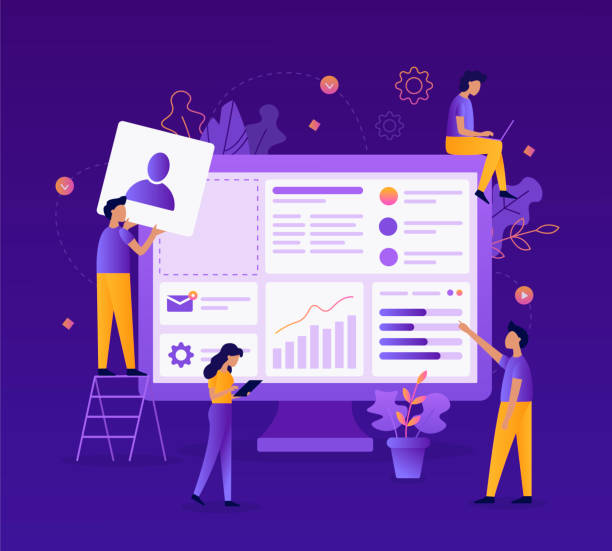
After #e-commerce_website_design# and its optimization, the next crucial step is marketing and promoting it to attract customers.
This section provides an informative and entertaining guide to effective strategies for increasing your visibility and sales.
It’s no longer enough to simply have an e-commerce website; you must actively promote it to your target audience.
Using social media networks such as Instagram, Telegram, and Facebook to connect with customers and showcase products is a powerful strategy.
You can drive significant traffic to your site by organizing contests, providing engaging and interactive content, and targeted advertising on these platforms.
Email marketing also remains a very effective tool for maintaining relationships with existing customers and attracting new ones.
Sending newsletters, special discounts, and information about new products via email can help increase loyalty and repeat purchases.
Digital marketing also includes pay-per-click (PPC) advertising campaigns on Google and social media, collaborations with influencers, and content marketing (creating blogs and relevant articles).
Running seasonal campaigns and offering special discount codes can quickly grab customer attention and boost sales.
Remember that success in e-commerce website design depends not only on its appearance and functionality but also on your ability to market and reach your target audience.
The table below shows some marketing strategies and related tools:
| Marketing Strategy | Description | Related Tools |
|---|---|---|
| Social Media Marketing | Creating engaging content, targeted advertising, interacting with followers | Instagram, Telegram, LinkedIn, Facebook, social media management tools |
| Email Marketing | Sending newsletters, special discounts, new product notifications | Mailchimp, Sender, Nardeban |
| Pay-Per-Click (PPC) Advertising | Displaying ads in search results and advertising networks | Google Ads, Instagram Ads, Yektanet |
These approaches are complementary and can significantly increase your traffic and sales on an e-commerce website.
Continuous Maintenance and Updates of the E-commerce Website
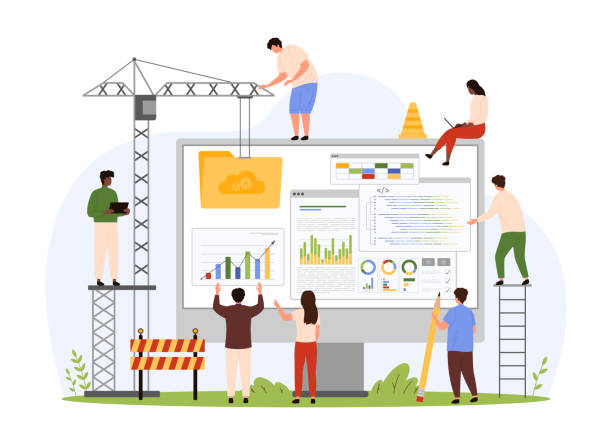
After the #initial_phase# and launch of your e-commerce website design, your work is not finished.
Continuous maintenance and updates are of paramount importance to ensure that your site remains secure, fast, and efficient.
This section addresses these critical aspects in a specialized and guiding manner.
One of the main reasons for updates is security issues.
Hackers are constantly looking for vulnerabilities, and e-commerce platforms, plugins, and themes must be regularly updated to protect against attacks.
Regular backups of all site data (products, customers, orders, and content) are also essential so that in the event of any unforeseen problems, you can quickly restore your site.
In addition to security, updates can include performance improvements, adding new features, and fixing existing bugs, all of which contribute to improving user experience.
Monitoring site performance using tools like Google Analytics is also very important.
These tools provide valuable information about user behavior, conversion rates, and site weaknesses that can be used for future improvements.
Software maintenance is an ongoing process and includes checking for broken links, optimizing images and databases for speed, and ensuring the proper functioning of all forms and buttons.
An e-commerce website that is well-maintained and updated not only remains technically strong but will always be attractive and trustworthy for users.
This continuous care significantly contributes to increasing the lifespan and effectiveness of your e-commerce website design.
Does your current corporate website present a worthy image of your brand and attract new customers?
If not, turn this challenge into an opportunity with Rasaweb’s professional corporate website design services.
✅ Significantly improves your brand’s credibility and image.
✅ Paves the way for attracting new leads and customers.
⚡ For a free and specialized consultation, contact Rasaweb now!
Common Mistakes in E-commerce Website Design and Management

While the #advantages_of_e-commerce_website_design# are numerous, many businesses make mistakes when building their online store that can prove detrimental.
This section examines these common mistakes and how to avoid them in a question-provoking and guiding manner.
One of the biggest mistakes is neglecting User Experience (UX) and User Interface (UI).
A beautiful but complex or slow site quickly discourages users.
Ignoring responsive design is also a common mistake that leads to your site not displaying properly on mobile devices, even though a significant portion of traffic comes from mobile.
Another big mistake is the lack of Search Engine Optimization (SEO); without SEO, even the best site won’t be seen.
Forgetting comprehensive product descriptions and high-quality images also means losing an opportunity to build customer trust.
Are your products well-introduced? Can the customer easily find what they are looking for? Common mistakes include not offering diverse and secure payment methods, neglecting customer support (quick responses to questions and problems), and overlooking continuous site marketing and promotion.
Some businesses believe that once an e-commerce website is designed, the job is done, and there’s no need for updates or new content.
This static approach leads to stagnation and loss of customers.
Failing to analyze site performance data and not adjusting strategies based on it is also a fatal mistake.
To succeed in e-commerce website design, you must learn from these mistakes and continuously strive to improve your site.
The Future of E-commerce Website Design and Emerging Trends

The world of #e-commerce# and e-commerce website design is rapidly evolving, with new trends constantly emerging.
This section provides an analytical and news-oriented look at the future of this field and upcoming innovations.
One of the most important trends is the increasing importance of Artificial Intelligence (AI) and Machine Learning (ML) in personalizing the shopping experience.
These technologies can optimize product recommendations based on user purchase and search history, provide intelligent chatbots for customer support, and even make accurate predictions of product demand.
Augmented Reality (AR) and Virtual Reality (VR) are also changing how customers interact with products.
Imagine being able to virtually place a piece of furniture in your home before buying it, or virtually trying on clothes.
These immersive experiences significantly increase conversion rates.
Emerging trends also include contactless payments, voice search, and a greater emphasis on sustainability and corporate social responsibility in the e-commerce website design process.
Increased use of video on product pages and live streaming for product introductions are also trends that help increase customer engagement.
These new trends contribute to e-commerce website development to provide a richer, more personalized, and more efficient experience for users.
For future success, businesses must be ready to embrace these technologies and incorporate them into their e-commerce website design strategies.
Frequently Asked Questions
| Question | Answer |
|---|---|
| What is e-commerce website design? | It is the process of creating an online platform for selling products or services, which includes designing the user interface (UI), user experience (UX), and necessary functionalities for online shopping. |
| What are the key features of a good e-commerce website? | Easy navigation, high loading speed, robust search capability, efficient shopping cart, secure payment gateway, clear product display with quality images, user review functionality, and responsiveness (mobile compatibility). |
| What platforms are common for e-commerce website design? | Popular platforms include WooCommerce (on WordPress), Shopify, Magento, PrestaShop, and also proprietary content management systems. |
| What is the importance of an e-commerce website being responsive? | Given the increasing use of mobile for online shopping, a responsive website (correct display on different screen sizes) is crucial for providing a good user experience and increasing conversion rates. |
| How long does the process of designing an e-commerce website usually take? | The duration depends on the project’s complexity, the number of products, required special features, and implementation method, and can vary from several weeks to several months. |
And other services of Rasaweb Advertising Agency in the field of advertising
Smart Reportage: Professional optimization for customer behavior analysis using precise audience targeting.
Smart Reportage: A novel service for increasing digital branding through dedicated programming.
Smart Marketplace: A quick and efficient solution for customer acquisition with a focus on attractive UI design.
Smart Custom Software: A quick and efficient solution for customer acquisition with a focus on marketing automation.
Smart Brand Identity: An effective tool for increasing click-through rates with the help of attractive UI design.
And over a hundred other services in the field of internet advertising, advertising consultation, and organizational solutions
Internet Advertising | Advertising Strategy | Advertorials
Resources
A Complete Guide to Successful E-commerce Website Design
Important Tips in E-commerce Website Design
How to Design a Practical E-commerce Website?
Professional E-commerce Website Design: From Start to Finish
? Transform your business in the digital world with Rasaweb Afarin Digital Marketing Agency. From secure and attractive website design to search engine optimization and social media management, we guarantee your growth and success with targeted and specialized solutions.
📍 Tehran, Mirdamad Street, next to Bank Markazi, Kazeroun Jonoubi Alley, Ramin Alley, No. 6


